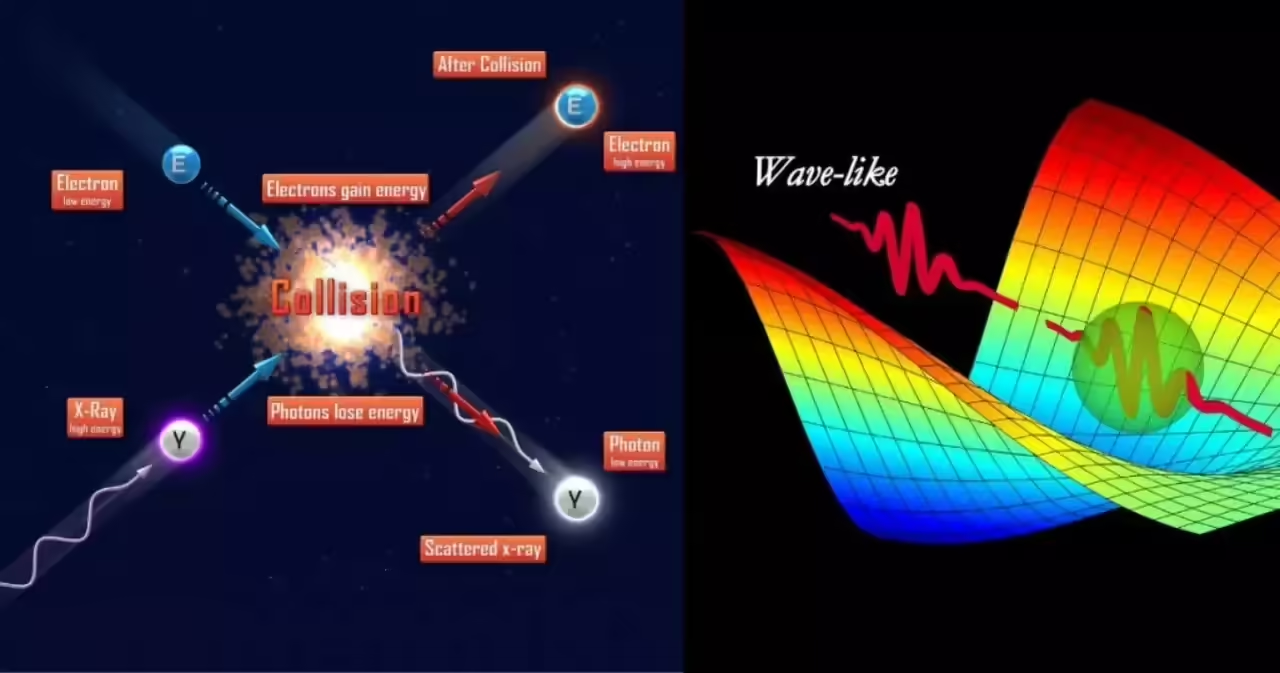A Glimpse into the Future of Entertainment
In the last decade, the world of entertainment has undergone a significant transformation thanks to technological advances. One of the most exciting and promising developments is that of 3D screens. These innovations promise to take the viewing experience to an entirely new level, offering unprecedented immersion and visual quality that was previously only imaginable in science fiction movies.
What Are 3D Screens?
3D screens are devices that allow the viewing of three-dimensional images, providing a depth experience that tricks the human eye into perceiving the image in three dimensions, instead of the traditional two dimensions (height and width). This effect is achieved through various technologies, such as stereoscopy, which presents two slightly different images to each eye, simulating the depth perception we have in the real world.
Types of 3D Screens
There are several types of 3D screens, each using different techniques to create the illusion of depth:
Passive 3D Screens: Use polarized glasses that filter two images projected simultaneously. They are more economical and common in cinemas.
Active 3D Screens: Require shutter glasses that synchronize with the screen to quickly alternate images for each eye. They offer superior image quality but are more expensive.
Autostereoscopic Screens: Do not require glasses, using lenticular lenses or parallax barriers to direct different images to each eye. They are ideal for personal devices like phones and gaming consoles.
Relevance in Personal Entertainment
3D screens have a significant impact on various areas of personal entertainment:
Home Cinema: 3D screens allow for an immersive cinematic experience from the comfort of home. 3D movies can now be enjoyed with quality that rivals that of the cinema.
Video Games: The video game industry has been one of the biggest beneficiaries of this technology. 3D games offer more immersive and realistic gameplay, transporting players to three-dimensional worlds.
Television and Streaming: Streaming services and TV channels have begun offering 3D content, providing a new dimension to series and documentaries.
Virtual and Augmented Reality: 3D screens are fundamental in the development of virtual reality (VR) and augmented reality (AR) devices, which are revolutionizing the way we interact with digital content.
Benefits and Challenges
3D screens offer numerous benefits, such as greater immersion and a richer, more engaging visual experience. However, they also present challenges, including the cost of devices, visual fatigue for some users, and the need for high-quality 3D content to fully exploit the technology.
The Evolution of 3D Technology: From Cinema to Home
3D technology has come a long way from its beginnings to become an integral part of personal entertainment. This historical journey shows us how it has evolved and transformed the visual experience both in cinemas and personal devices.
The Early Steps of 3D in Cinema
The concept of 3D images began to take shape in the early 20th century. One of the first presentations of 3D movies occurred in 1922 with “The Power of Love”. However, it was in the 1950s that 3D cinema experienced a boom, with movies like “House of Wax” (1953) using anaglyph technology, where glasses with colored lenses (red and blue) were required to view the images in three dimensions.
The Golden Age of 3D
The true boom of 3D cinema came in the 1980s and 1990s, with advances in projection technology and the introduction of systems like IMAX 3D. These innovations allowed for better image quality and a more immersive experience. Movies like “Jaws 3-D” (1983) and “Captain EO” (1986), directed by Francis Ford Coppola and starring Michael Jackson, captured the public’s imagination.
The Digital Revolution and the Renaissance of 3D
The renaissance of 3D came with the advent of digital technology. In 2009, James Cameron’s “Avatar” revolutionized the film industry, using specially designed 3D cameras and advanced motion capture technology. The film was not only a box office success but also marked the beginning of a new era for 3D, prompting many other studios to invest in this technology.
The Transition to Personal Entertainment
The next step in the evolution of 3D was its transition from cinemas to homes. As technology advanced, 3D screens began to appear on televisions, gaming consoles, and mobile devices.
3D Televisions: In the early 2010s, major television manufacturers began launching 3D models. These televisions used technologies such as passive and active stereoscopy, and promised to bring the 3D cinema experience to the living room.
Gaming Consoles: The video game industry was one of the first to adopt 3D technology. The Nintendo 3DS, launched in 2011, offered a 3D experience without the need for glasses, using an autostereoscopic screen.
Virtual Reality (VR) and Augmented Reality (AR): 3D screens are also fundamental to virtual and augmented reality. Devices like the Oculus Rift and HTC Vive offer total immersion experiences in virtual worlds, while AR overlays three-dimensional elements in the real world, as seen in games like Pokémon GO.
Challenges and Recent Advances
Despite its initial popularity, 3D at home faced several challenges. Many consumers experienced visual fatigue and headaches, and the lack of high-quality 3D content limited its adoption. However, the technology has continued to advance. 3D televisions have evolved to be more comfortable and accessible, and 3D content has increased in quality and availability.
The Future of 3D in Personal Entertainment
The future of 3D seems to be tied to virtual and augmented reality. These technologies are constantly evolving and promise to take the 3D experience to new heights. Additionally, with the advancement of display technologies and artificial intelligence, we are likely to see significant improvements in the quality and accessibility of 3D screens in the coming years.
How 3D Screens Work: The Science Behind the Third Dimension
3D technology has revolutionized the way we experience entertainment, adding an extra dimension to traditional 2D viewing. But how do 3D screens create the illusion of depth? The answer lies in optical principles and advanced techniques that trick our brain into perceiving three-dimensional images. In this article, we explore the science behind 3D screens, including key concepts such as stereoscopy and parallax.
Stereoscopy: The Basis of 3D
Stereoscopy is the main technique behind 3D screens. This technique is based on the way our eyes perceive the world. Each eye sees a slightly different image due to the distance between them. The brain combines these two images to create a perception of depth. 3D screens replicate this natural effect by showing two slightly different images, one for each eye.
Stereoscopic Images: Stereoscopic images are two images captured from slightly different angles. When viewed properly, these images create the illusion of depth.
3D Glasses: 3D glasses play a crucial role in viewing stereoscopic images. There are several types of 3D glasses, such as passive (polarized) and active (shutter) glasses. Passive glasses use polarized lenses that filter images for each eye. Active glasses, on the other hand, synchronize with the screen to quickly alternate between images for each eye.
Parallax: The Perception of Depth
Parallax is another important concept in creating 3D images. It refers to the change in the position of an object when viewed from different angles. In the context of 3D screens, parallax is used to generate the illusion of depth by showing different images to each eye.
Parallax Barriers: Parallax barriers are a method to create the perception of depth without the need for glasses. They consist of a series of vertical slots that direct different images to each eye. This technique is used in autostereoscopic screens, such as some portable gaming consoles and mobile devices.
Lenticular Lenses: Another technique to achieve parallax is the use of lenticular lenses, which are a series of cylindrical lenses that split the image into strips and direct each strip to a different eye. This allows for 3D viewing without glasses, though with a limited viewing angle.
3D Screen Technologies
There are several technologies to create 3D screens, each with its own methods for generating three-dimensional images:
Passive 3D Screens: Use polarized glasses that separate images for each eye. They are common in cinemas and offer an economical 3D experience, though with lower resolution and brightness compared to other technologies.
Active 3D Screens: Employ glasses with electronic shutters that quickly alternate images for each eye, synchronizing with the screen. They provide superior image quality but are more expensive and can cause visual fatigue.
Autostereoscopic Screens: Do not require glasses and use parallax barriers or lenticular lenses to create the perception of depth. They are ideal for personal devices, though they usually have a limited viewing angle.
Challenges and Solutions
Despite their advances, 3D screens face challenges such as visual fatigue and limited viewing angles. To address these issues, researchers are developing new technologies such as light field and holographic displays, which promise to improve the comfort and quality of 3D viewing.
Advantages of 3D Screens in Personal Entertainment
3D screens have revolutionized the way we experience entertainment, offering a number of benefits that significantly enhance the user experience. Below is a list of the main advantages that 3D screens provide in the realm of personal entertainment:
Greater Immersion
3D screens offer an immersive viewing experience that immerses the viewer in the content. The perception of depth and the feeling of being “inside” the scene make movies, video games, and other media more engaging and exciting.
Richer Visual Experience
3D images are more detailed and realistic, providing a richer visual experience. The depth effects and enhanced clarity allow viewers to appreciate the details and quality of the image more fully.
Improvements in Gameplay
The video game industry has benefited greatly from 3D technology. 3D games offer a more realistic and immersive gaming experience, allowing players to interact with the virtual environment more naturally. This not only enhances entertainment but also improves gaming skills and spatial perception.
Educational and Training Applications
3D technology is not only for entertainment but also has educational and training applications. 3D screens can be used in virtual simulations for learning and training in various fields, such as medicine, aviation, and engineering. The ability to visualize and manipulate objects in three dimensions improves comprehension and learning.
Personalization and Interactivity
3D screens enable a more personalized and interactive viewing experience. Users can adjust depth settings and visual effects to suit their preferences. Additionally, some 3D screens offer gesture control and eye tracking, allowing for more intuitive and natural interaction with the content.
Virtual and Augmented Reality
3D screens are essential in the development of virtual and augmented reality (VR and AR). These technologies offer unique and transformative experiences, from immersive virtual reality environments to augmented reality applications that overlay digital elements in the real world. 3D screens provide the necessary visual platform for these innovations.
Advances in Technology and Comfort
Technological advances have improved the comfort and usability of 3D screens. Autostereoscopic displays, for example, allow for 3D viewing without the need for glasses, making the experience more convenient and comfortable. Additionally, new technologies, such as light field and holographic displays, promise to further improve the quality and accessibility of 3D screens.
Future of 3D Screens: Trends and Developments
The future of 3D screens is promising, with continuous advancements in technology and new trends emerging in personal entertainment. These developments aim to enhance the 3D viewing experience and expand its applications. Here are some key trends and advancements shaping the future of 3D screens:
Light Field Technology
Light field technology is one of the most exciting advancements in 3D screens. This technology captures and displays the direction and intensity of light rays, creating highly realistic 3D images without the need for glasses. Light field displays offer a more natural and immersive viewing experience, with improved depth perception and visual quality.
Holographic Displays
Holographic displays represent a leap forward in 3D technology. These displays use interference patterns to create three-dimensional images that appear to float in mid-air. Holographic displays offer a truly immersive experience and have applications beyond entertainment, including medical imaging, design, and communication.
Integration with Virtual and Augmented Reality
3D screens are integral to the continued development of virtual and augmented reality (VR and AR). VR and AR headsets rely on advanced 3D displays to create immersive environments and overlay digital information in the real world. The integration of 3D screens with VR and AR technologies is set to transform industries such as gaming, education, and professional training.
Interactive and Gesture Control
Future 3D screens are likely to incorporate more advanced interactive features, such as gesture control and eye tracking. These technologies allow users to interact with 3D content more intuitively and naturally, enhancing the overall experience. Gesture control enables users to manipulate objects in three dimensions, while eye tracking ensures optimal viewing angles and depth effects.
Improved Comfort and Accessibility
Addressing the challenges of visual fatigue and limited viewing angles is a priority for the future of 3D screens. Researchers are developing new technologies and materials to improve comfort and accessibility. Autostereoscopic displays, which do not require glasses, are becoming more advanced and widely available. Additionally, efforts are being made to reduce the cost of 3D screens, making them more accessible to a broader audience.
Expansion of 3D Content
The availability of high-quality 3D content is crucial for the success of 3D screens. Content creators and developers are increasingly producing 3D movies, games, and applications. Streaming services and TV networks are also offering more 3D content. This expansion of 3D content ensures that users have a diverse range of options to enjoy their 3D screens.
Collaboration with Artificial Intelligence
Artificial intelligence (AI) is playing a significant role in the advancement of 3D screens. AI algorithms can enhance the quality of 3D images, optimize depth effects, and improve the overall viewing experience. AI-powered 3D screens can also adapt to individual preferences and viewing conditions, providing a personalized and optimized experience.
Environmental and Energy Considerations
As with all technology, the future of 3D screens includes a focus on environmental and energy considerations. Manufacturers are working to develop energy-efficient 3D screens that reduce power consumption without compromising quality. Sustainable materials and production processes are also being explored to minimize the environmental impact of 3D screen manufacturing.
3D Screens in Personal Entertainment
In conclusion, the future of 3D screens in personal entertainment is bright, with continuous advancements and new trends enhancing the viewing experience. Light field and holographic displays, integration with VR and AR, interactive features, improved comfort, expanded content, collaboration with AI, and environmental considerations are all shaping the future of 3D technology. As these developments continue to evolve, 3D screens will undoubtedly become an even more integral part of our entertainment landscape.








